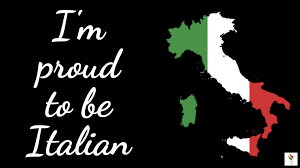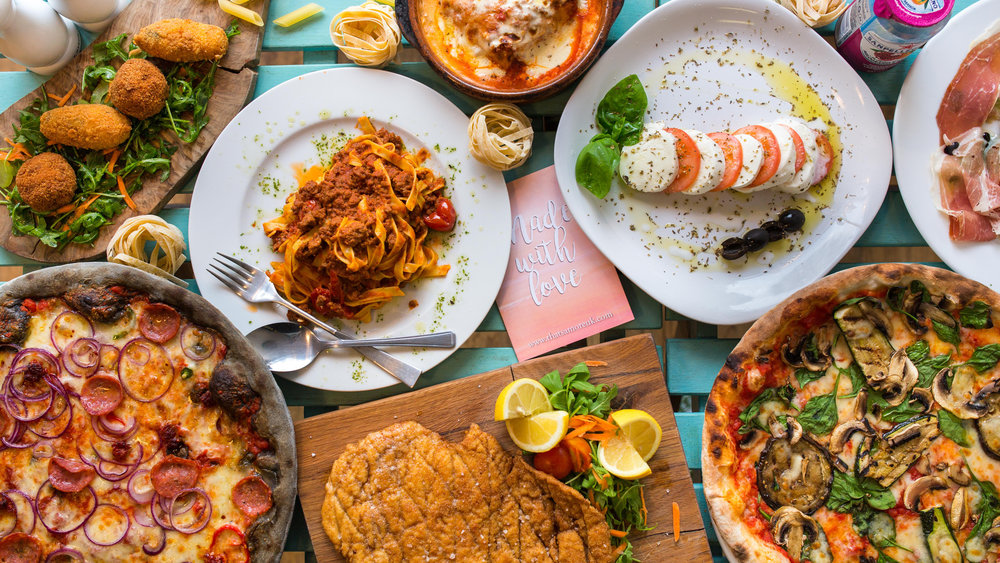Heritage
Italians Are Proud People

It’s no great secret that Italian-Americans are a proud bunch. Harking from one of the great European heartlands of culture, the Italian-American community manages to maintain strong intergenerational ties to the Bel Paese. With over 15 million US residents tracing their heritage to the country, it’s no wonder that the community has managed to blossom into one of the most vibrant and dedicated diaspora groups in the United States–and perhaps even the world.
And there’s a lot to be proud of. From Michelangelo’s Sistine Chapel through to everyday staples like pasta carbonara and arrabiatta, Italy has earned its spot at the top of world culture. Since the days of Marco Polo, exporting Italian culture to the world at large has been an effortless feat–and many Italian-Americans rightly take pride in their roots.
Food
No account of Italian pride, or even just Italy itself, would be complete without a nod to the traditional Italian cuisine. A preference for fresh ingredients and simple recipes has made Italian fodder a mainstay the world over. And as most, if not all, Italian-Americans are aware, for a relatively small country it packs a punch in terms of the diversity it offers up. US communities are well-known for staying connected to not just the country at large, but also the specific regions they trace their roots to; it follows that relatively lesser-known southern delicacies like caponata, arancini, and Sarde e baccafico take pride of place in many a Sicilian-American’s home.
And, for better or for worse, contemporary American culinary traditions have melded with Italian across swathes of the north-east; Chicago deep-dish pizza being the example that springs most obviously to mind. Love it or hate it, it certainly speaks to the sense of affection that Italian-American communities feel for the homeland. As the Italians say, it will leave you ‘pieno come un uovo’ (full as an egg).
Family
With food comes family. If Rome is the center point around which the Christian faith rallies, then the dinner table is that which unites the Italian family. And indeed, many Italian-American families cling to traditional dinner table etiquette, though three-course meals and bottomless amaretto can at times be hard to square with the fast-paced North American lifestyle.
Nevertheless, Italian-Americans staunchly stick to the close-knit family structure. In fact, this is probably one of–if not the most–heartwarming of traditions associated with the motherland. As much of the rest of the world moves towards a decentralized family and community structure, many Italian-Americans are still blessed with a tight nuclear family, one where respect for elders runs deep and where extended family members are well-known and seen on a regular basis. We wouldn’t have it any other way.
Religion
Though Italy officially became a secular state in 1984, it is hard to rebut the suggestion that it remains the epicenter of the Christian religion. Today, around 80% of residents in the country profess to some denomination of the religion, and it’s influence on Italian culture more generally cannot be overstated. Many Italian-Americans may not practice Christianity. But a sizeable number of these still draw inspiration from the profound impact that it has had on the world stage, and the scriptural teachings contained within the Bible. At the very least, it shows the degree to which one small European country came to influence the world at large not through colonization by the sword, but by the teachings of Jesus Christ.
Passion
Though a profound passion for old-school romance remains widespread throughout much of Southern Europe and diaspora cultures, Italian-Americans are all too aware of their Casanova status. Courtship and an appreciation for gentlemanly behavior survive in the Italian-American community as they have fallen out of favor throughout much of the Western world. This can best be seen in ‘il bacetto’–the practice of the double-cheek kiss that has continued on into many Italian-American communities today. It is emblematic of the traditional, warm style of interaction that characterizes not just Italy, but much of the surrounding regions. Would Romeo and Juliet worked as well set in Germany or Britain?
Appreciation for the finer things in life
Art, fashion, architecture, and lifestyle; Italy is truly a country that packs it all in. And much of the beauty and appreciation for the dolce vita shines through in pockets situated around the US. Cities like Venice, Florence, and Rome evoke a certain sense of wonder; for those lucky enough to have whizzed around the cobblestone streets on the back of a Vespa, it’s likely that they’ll take a little bit of Italy with them back to America.
And needless to say, a strong appreciation for design in architecture spilled over to the suit; giving rise to countless world-class brands like Armani and Versace. Think luxury car brands–I’m sure some of the first to pop into your head were Ferrari, Lamborghini, and Maserati. Italian-Americans appreciate the beauty of form in everyday objects, and it’s little wonder that the community gave America some of its finest architects, painters, and designers.
Language
And of course, in any roundup of what makes us proud to be Italian it would be remiss to skip over the Italian language. For years, Italian was the language of music–even Mozart penned many of his pieces in the language. And today, Italian-language operas sell out concert halls from Moscow to Melbourne. The aural quality of Italian is evident to all, no matter of nationality or creed – in fact, it’s even a common trope in many countries.
Perhaps this is why the Italian language has survived in the States, despite a targeted campaign of repression during the Second World War. Though largely concentrated in New York City (300,000) and New Jersey (116,000), Italian-speaking communities are found across the US. Florida, for example, counts around 67,000 proficient speakers, almost 6% of the total Italian-speaking community nation-wide. And, interestingly, while many of these groups may be second or even third-generation immigrants, this speaks to the strength of the Italian-American identity and the degree to which we take pride in our heritage.
-

 Heritage5 years ago
Heritage5 years agoA Rough Beginning For Italians in America
-

 Heritage5 years ago
Heritage5 years agoWhat it truly means to be Italian
-

 Italian5 years ago
Italian5 years agoNew York vs Chicago Pizza
-

 Heritage5 years ago
Heritage5 years agoItalians And Family Values
-

 Italian5 years ago
Italian5 years agoTop 9 Popular Italian Pastries
-

 Heritage5 years ago
Heritage5 years agoEllis Island Italian Americans
-

 Italian5 years ago
Italian5 years agoIn 1962, an Italian magazine carried a story on how the world will look in 2022. Is it Real???
-

 Heritage5 years ago
Heritage5 years agoHow Italian American families celebrate holidays







Michael Gentile
June 27, 2020 at 11:41 pm
We have one of the best culture in the world you are not going to be able to find to many people that don’t like itlian food and the history of our beautiful country